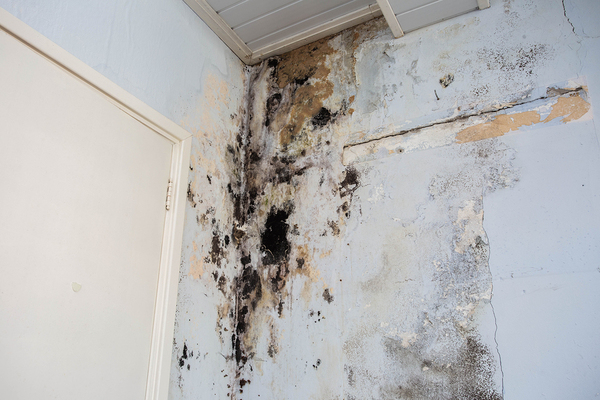
Not all mold is this easy to spot during a home inspection.
Mold isn’t just ugly; it can be dangerous too. That’s why looking for mold is such an important part of a home inspection.
Some mold can be cleaned up with bleach, but some is in the air, and you can’t even see it. Breathing in these mold spores on a daily basis, the way occupants of a home might if the house contains mold, can lead to health problems.
Mold can only grow in the presence of moisture, so it is most frequently found in basements, bathrooms, and kitchens. It can be easy enough to see growing on surfaces. But what if you can’t see it? What if it’s inside the walls?
How to Detect Mold in a Home Inspection
Your first clue would be a musty smell. This is common in any basement, but a finished basement with adequate ventilation should not smell.
Make note of any signs of water damage: crumbling plaster, water marks on the walls or buckled flooring. Check under cabinets with plumbing for signs of leaks. Water damage can come from plumbing leaks, toilet or sewer overflows, or malfunctioning appliances such as a dishwasher, clothes washer, or water heater.
Previous water damage can lead to mold growth in the future. But you can’t always be sure the leak has even been fixed, so it should be noted.
Where to Look for Mold
Another area to check for possible mold contamination is the air conditioner. See if the unit or the vents are rusty, damp, or dusty.
Attics are often hot and dry, but if the roof leaks, it might be damp or moldy. Check the attic for signs of mold, and keep an eye out throughout the home — especially around windows or doors — for rotting wood and signs of warping.
In the main living spaces, you might see rippling or dark spots on the corners of the carpeting, indicating leaks and mold. In the bathroom, even if everything looks fine, if there is no exhaust fan, this should be noted. In many areas, this is a code violation.
Some homes in humid climates tend to retain moisture. Whether it’s due to the environment, construction, or location of the home, mold growth may be a chronic problem. In homes such as this, a dehumidifier can help eradicate the problem. Such appliances can be bought at home improvement stores and are simple to operate.
In some homes, mold growth is only a problem in small spaces, like closets or pantries. For these areas, a product such as Damp-Rid might be enough to solve the problem.

Whether indoors or out, mold is a problem that shouldn’t be ignored.
Checking for Mold Outdoors
Mold is more dangerous inside the home than out, but it’s not good outside either. A property should be graded properly, and gutters and downspouts should be kept clean. Otherwise, water could pool around the foundation, and this could lead to rot and mold growth.
Trees, bushes and other foliage planted too close to the house can also cause mold to grow, especially on the shady side of a building. Such plants should be trimmed back or removed.
The home inspection training course taught by ICA School includes a special section on mold. For more information, check out our website today








